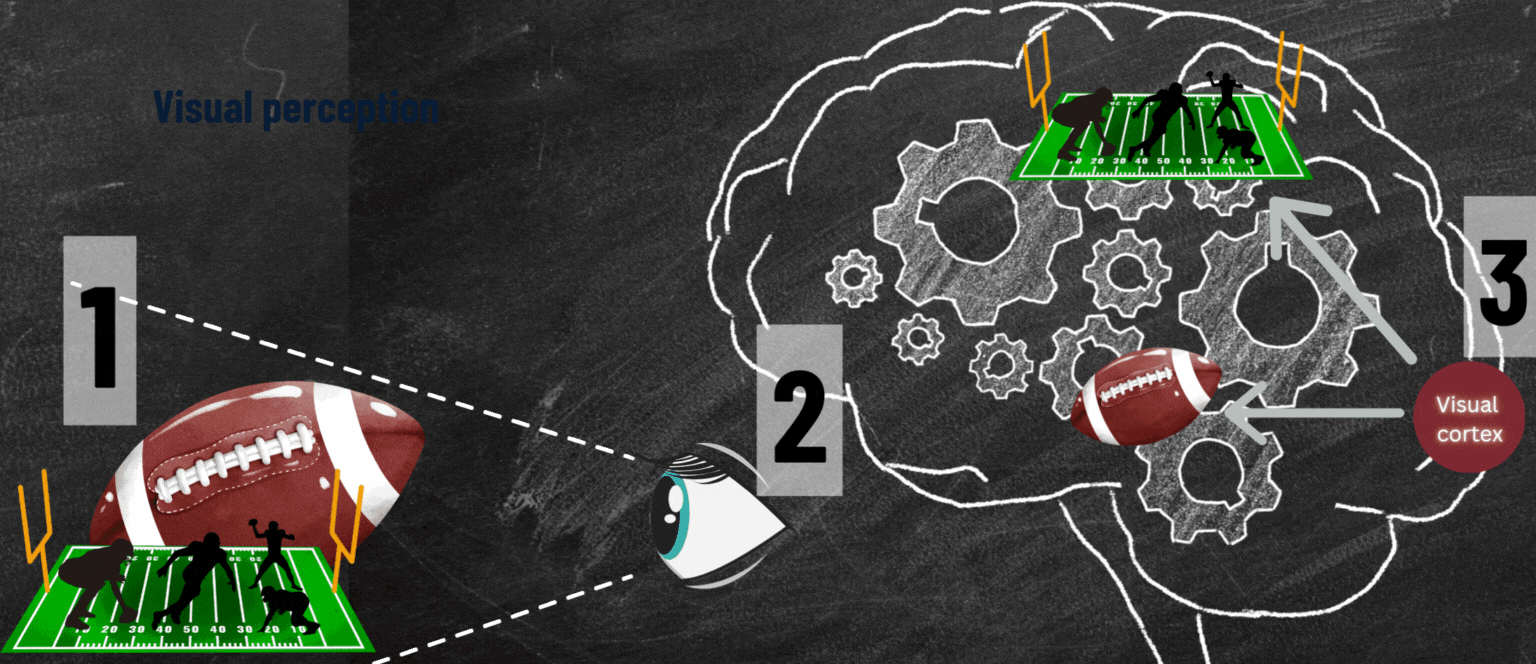Vision research aims to shed new light on CP
Some individuals with CP experience difficulties perceiving their surroundings in daily life. A new project funded by the Elsass Foundation will investigate whether these challenges stem from the brain’s inability in certain cases to correctly process visual information.
Imagine standing at a pedestrian crossing in an intersection, looking across to the other side of the road. You see red traffic lights, a blue sky, white pedestrian stripes, and cars driving along a central strip adorned with flowers. Everything in this scene is sent from the eyes to the brain, where information about shapes, colours, and motion is processed and combined into a complete picture.
Some people struggle to see the unified image, where aspects like colour, shape, objects, movement, or distances are affected.
This phenomenon, known as visual perception, is the focus of a new PhD project led by neuropsychologist and PhD student Katrine Sand Andersen at the University of Copenhagen. The aim is to provide new and important knowledge about aspects of the CP diagnosis beyond its more typical understanding.
“There has been a strong focus on motor challenges, which are a core aspect of diagnosing CP,” says Andersen. She continues:
“But what about the cognitive aspects, like visual perception? That part of visual function isn’t directly linked to the eyes but rather to how well the brain translates visual information into something we can understand.”
For individuals with CP, this process can be disrupted in various ways, leading to difficulties in recognising objects, judging distances, or noticing things within their field of vision.
Visual perception
Visual perception refers to how the brain interprets what we see.
This subject has always fascinated Andersen. So, when her supervisor told her that the Elsass Foundation had allocated funding for research on this topic and invited her to join the project, she didn’t hesitate to say yes.
“I’ve worked as a neuropsychologist at a hospital and had long wanted to pursue a PhD. When this project came up, I found it exciting because it involved something I was already interested in,” explains Andersen. She elaborates:

1) Light reflects off the ball, the football field, and the players and is captured by the eyes. 2) The eyes send this information to the visual cortex at the back of the brain. The visual cortex processes details like colours, edges, and shadows. 3) This information is then sent along two different pathways in the brain to areas that process what we see and where things are located.
“The brain might, for example, struggle to recognise specific movements. The eyes might be able to see cars driving in traffic, but the brain cannot interpret the fluid movement or speed. For others, this might manifest as difficulty recognising familiar people walking past them in a crosswalk. Or it could mean they don’t notice things to their left, like a car or bicycle approaching from that side,” says Andersen.
Practical applications and perspectives in research
In her research, Andersen has encountered individuals with CP who report difficulties finding their way, recognising people, or focusing on multiple things simultaneously. These challenges don’t necessarily correlate directly with motor skills, and their severity varies significantly from person to person.

Katrine Sand Andersen, neuropsychologist and PhD student.
“Let’s say someone with CP struggles to walk through an open door without hitting the doorframe. For a long time, this might have been attributed to motor impairments, but the real issue could be the brain’s difficulty processing information about what they see and where it’s located."
By describing and understanding visual perception as in the example above, Andersen hopes that professionals will, in the future, be able to make accurate diagnoses and develop personalised plans for individuals with CP.
“A key part of the project is ensuring the results can be applied in practice. This means we hope to provide recommendations for tests that professionals can use when assessing individuals with CP. It’s exciting to think about how our findings might be applied in practice,” concludes Andersen.
Her PhD project, titled EnVision, is expected to run until February 1st, 2025.



